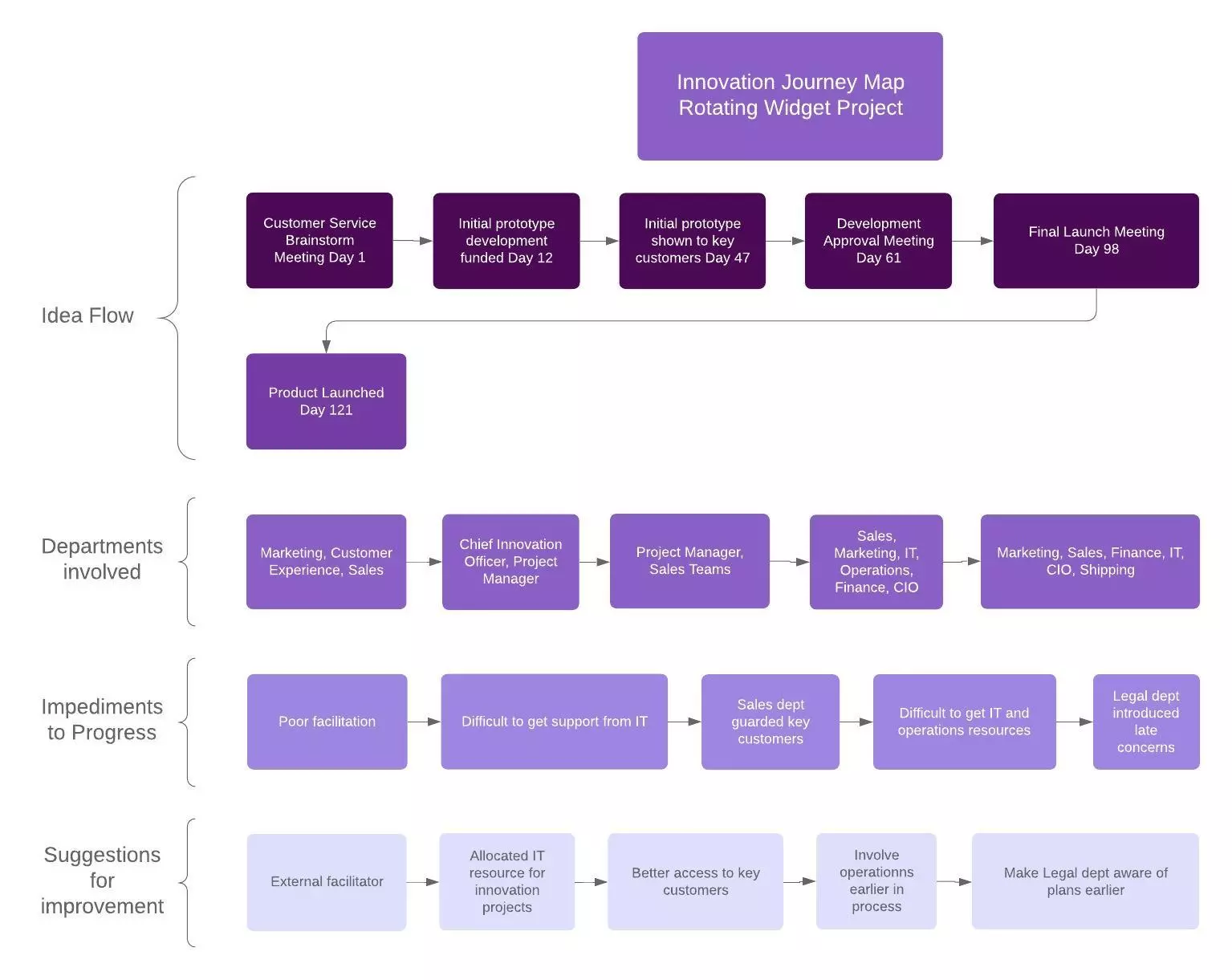Comments (3)
David Roberts
One of the best innovation articles I've come across!!!
James Whitehead
Very important innovation advices. I learned a lot!
Kieren Brady
Absolutely great post !

The Customer Journey Map is a popular management tool. It is a visual representation of customer interactions with a company and a tool to investigate, analyse and thus improve customer experiences. Let's borrow the tool and adapt it for our purposes.
The Innovation Journey Map (IJM) is a similar concept showing the journey that an innovation takes from initial conception through to final implementation. The purpose of the IJM is to realistically assess what is happening with innovative ideas within your organisation, to identify impediments and delays and to significantly improve the innovation process. The IJM would typically include:
Once a map has been developed, it can be expanded to include:
It is recommended that you draw up several maps. Start with a couple of innovations which you have successfully implemented in the last 12 months. Talk to the project owners and draw a block diagram showing each step starting with the origination of the idea right the way through to implementation. Maybe take a major new product or service and also an important internal process or system innovation. Next examine a project which made some progress and then got canned.
For a new product innovation the IJM might look a little like a stage gate diagram. But a stage gate diagram is normally idealized and looks at the go/nogo critical points. The IJM is more messy, more complete and more realistic. It is an assessment of what actually happens showing all the key steps where the the proposal is either progressed or retarded.

A simplified IJM for a new product is shown above. Typically a map would have many more steps. The IJM provides a visualisation tool which can be used to assess the effectiveness of the corporate processes. Drawing up detailed IJMs for several different types of innovation projects will help show cultural and process obstacles to innovation. It is important that the timeline is shown so that important questions can be asked. These might include:
Innovation Journey Maps can become a useful addition to your management toolkit.
One of the best innovation articles I've come across!!!
Very important innovation advices. I learned a lot!
Absolutely great post !
Paul is a professional keynote conference speaker and expert facilitator on innovation and lateral thinking. He helps companies improve idea generation and creative leadership. His workshops transform innovation leadership skills and generate great ideas for business issues. His recent clients include Airbus, Microsoft, Unilever, Nike, Novartis and Swarovski. He has published 30 books on lateral thinking puzzles, innovation, leadership and problem solving (with over 2 million copies sold). He also acts as link presenter at conferences and facilitator at high level meetings such as a corporate advisory board. He has acted as host or MC at Awards Dinners. Previously, he was CEO of Monactive, VP International of MathSoft and UK MD of Ashton-Tate. He recently launched a series of podcast interviews entitled Insights from Successful People.
Leave your comments
Post comment as a guest